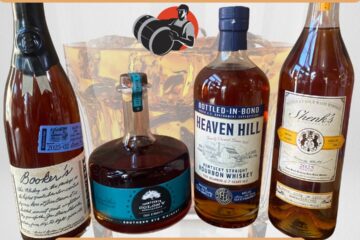Hello Cooper Customers
This is weekend’s tasting is going be fantastic and very educational !!!
I’ve made a strong effort to design this week’s tasting with exceptional wines and distinctive character while providing an educational experience.
The educational piece is very important as I believe knowledge is empowerment helping you to become an informative buyer.
As a bonus, the reds are $8-$10 less than their normal price due to an “Inventory Reduction” sale by a wholesaler. I know these wines very well so I bought all I could.
Three of the four wines are from Cote du Rhone and the other wine is a gorgeous “Orange” Pinot Gris from Alsace, France ( a real WOW WINE!).
Thank you, I hope you find the material helpful as we look forward to seeing you this weekend. INFO:
Growing up with a mom of Lebanese heritage was a special gift for me and my family and our dining experiences.
Our produce and proteins were fresh with very little canned products with many of our ingredients carrying a large Mediterranean influence. It was this food background that led me to pairing and drinking the red and white wines of Cotes du Rhone, France then as well as now. Personally, I believe Cote du Rhone wines from the North and South to be some of the most accessible and easiest wines to pair with most meals.
A few weeks ago, one of our wholesalers published an “Inventory Reduction” sheet. On this list were several amazing North and South Cotes du Rhone wine producers. Naturally, my mouth began to water so we stepped up and tried to buy all of it.
With this new-found inventory at much lower prices, I said to myself; “Self, you need to do
something to help educate your staff and customers”, so here we are!
The Cotes du Rhone
The Cotes du Rhone region is located in south-eastern France. The region surrounds the Cotes du Rhone River. It’s the second-longest river in France and it originates in Switzerland, from the Rhône Glacier in the Swiss Alps (in the canton of Valais).
The region runs north to south for 125 miles starting in Lyon
Crozes Hermitage –
Production is 85%-90% red and the rest is white wine
Crozes-Hermitage is Northern Rhone’s largest appellation, surrounding the steep granite faces of Hermitage to its north and south. Here the rolling vineyards are less extreme and its soils, rich in clay-limestone and alluvial matter.
Crozes Hermitage reds must be minimum 85% Syrah. Their taste profiles range from fruity and charming to lush and seductive. The Syrah’s of Crozes-Hermitage have more mass than those from St. Joseph but are less intense than those from Hermitage. While many are intended for early consumption, some of the best Syrahs from Crozes-Hermitage will age beautifully for 5-10 years.
Up to 15% of white grapes may theoretically be added to red Crozes at the time of fermentation but whether this is done or not depends on the decision of the winemaker. The best Crozes-Hermitage Syrahs will be fleshy with black fruit (currant, blackberry, and black cherry) and bay leaf qualities, notes of tar and stone, and a well-concentrated finish of smooth tannins.
About a tenth of the wine produced in Crozes-Hermitage is white, primarily composed of Marsanne supplemented by smaller amounts of Roussanne.
Gigondas –
The Southern Rhône region of Gigondas extends northwest from the notably jagged wall of mountains called the Dentelles di Montmirail, whose highest point climbs to about 2,600 feet. The region and its wines have much in common with the neighboring Chateauneuf-du-Pape except that the vineyards of Gigondas exist at higher elevation and its soils, comprised mainly of crumbled limestone from the Dentelles, often produce a more dense and robust Grenache-based red wine.
The region has a history of fine winemaking, extending back to Roman times. But by the 20th century, Gigondas was merely lumped into the less distinct zone of Côtes du Rhône Villages. However, it was first among these satellite villages to earn its own appellation, which occurred in 1971.
Gigondas reds must be between 50 to 100% Grenache with Syrah and Mourvèdre comprising the bulk of the remainder of the blend. They tend express rustic flavors and aromas of wild blackberry, raspberry, fig, plum, as well as juniper, dried herbs, anise, smoke and river rock. The best are bold but balanced, and finish with impressively sexy and velvety tannins.
The Gigondas appellation also produces rosé but no white wines.

